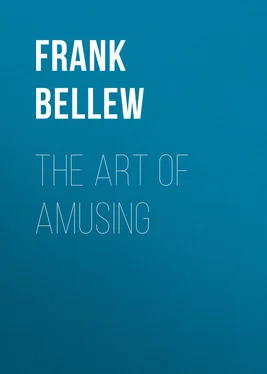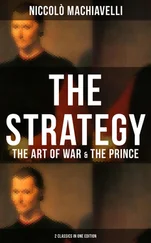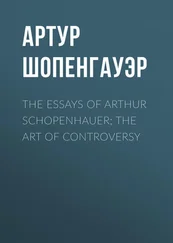Frank Bellew - The Art of Amusing
Здесь есть возможность читать онлайн «Frank Bellew - The Art of Amusing» — ознакомительный отрывок электронной книги совершенно бесплатно, а после прочтения отрывка купить полную версию. В некоторых случаях можно слушать аудио, скачать через торрент в формате fb2 и присутствует краткое содержание. ISBN: , Жанр: foreign_antique, foreign_prose, на английском языке. Описание произведения, (предисловие) а так же отзывы посетителей доступны на портале библиотеки ЛибКат.
- Название:The Art of Amusing
- Автор:
- Жанр:
- Год:неизвестен
- ISBN:http://www.gutenberg.org/ebooks/40309
- Рейтинг книги:3 / 5. Голосов: 1
-
Избранное:Добавить в избранное
- Отзывы:
-
Ваша оценка:
- 60
- 1
- 2
- 3
- 4
- 5
The Art of Amusing: краткое содержание, описание и аннотация
Предлагаем к чтению аннотацию, описание, краткое содержание или предисловие (зависит от того, что написал сам автор книги «The Art of Amusing»). Если вы не нашли необходимую информацию о книге — напишите в комментариях, мы постараемся отыскать её.
The Art of Amusing — читать онлайн ознакомительный отрывок
Ниже представлен текст книги, разбитый по страницам. Система сохранения места последней прочитанной страницы, позволяет с удобством читать онлайн бесплатно книгу «The Art of Amusing», без необходимости каждый раз заново искать на чём Вы остановились. Поставьте закладку, и сможете в любой момент перейти на страницу, на которой закончили чтение.
Интервал:
Закладка:
The whole wound up by his dancing a negro breakdown to imitation banjo 1 1 Should any of our friends not know how to produce an imitation of the banjo on a piano, we may as well inform them that it is done by simply laying a sheet of music over the strings during the performance.
on the piano, the entire audience patting Juba.
Now another performer appeared on the stage, dressed in extravagant imitation of the one who had preceded him, and commenced parodying in a still more extravagant style all the motions of the professional acrobat. We expected something grand! After innumerable flourishes he brought forward a small three-pound dumb-bell, laid it on the floor, and, bowing meekly to the audience in different parts of the house, he stooped down as though about to make an immense muscular effort, grasped the dumb-bell, slowly stretched it forth at arm's length, held it there a second or two, and then laid it down again, made a little flourish with his hands, and a low bow, just as they do in the circus after achieving something extra fine. In this way the performer went on burlesquing till we all roared with laughter. When he had retired, a conjuror appeared and exhibited numerous tricks, such as the ring trick, tricks with hat and dice, cup and ball, etc.; but as all these need machinery, we will not describe them at present. One or two, however, we may explain. No. 1. The performer presented a pack of cards to one of the audience and begged him to select a card; this the performer then took in his own hand, and carried it with its face downward, so that he could not see it, and placed in the middle of the floor of the stage; he then produced a large brown-paper cone, and placed it over the card, and commenced talking to the audience, telling them what he could do and what he could not do: finally he informed the audience that he could make that card pass to any place he or they chose to name. Where would they have it? One said one place, one another, till finally he pretended reluctantly to accede to one particularly importunate person's wishes, and declared that it should be found in the leaves of a certain book on a certain table at the back of the audience – and there it was, sure enough. This was done by having a piece of waxed paper attached to a thread lying ready in the middle of the floor; on this waxed paper the conjuror pressed the card, the thread being carried out under the screen at the back, where stood a confederate, who quietly pulled the card out from under the cone, and while the conjuror was talking he walked round, entered by another door, and placed the card in the book, where it was subsequently found.
Another trick consisted in his allowing a person to draw a card which he was requested to examine carefully, and even to mark slightly with a pencil. While the spectator was doing this, the performer turned round the pack in his hand so as to have all the faces of the cards upwards except the top one, which showed its back; he then desired that the card might be slipped anywhere into the pack; he then shuffled them well. Of course, on inspecting the pack he soon detected the selected card, it being the only one with its face down, which, after various manipulations, putting under cones and what not, he returned to the audience much to their surprise.
These efforts at legerdemain were certainly not very brilliant, but they amused the audience and were easy to do. We should like to give a few more of his simple tricks, but with one illusion-trick we will close the chapter, for which purpose it will serve, as it formed the finale to the conjuror's performance.
He stepped forward and said:
"I have shown you many wonderful things, but they are as nothing compared to what I can do. My supernatural power is such that I can lengthen or compress the human frame to any extent I please. You doubt it? Well, I will show you. You see Mr. Smith, yonder; he is a rather tall man; six feet two, I should judge? Well, I will throw him into a trance, and while he is in that state, I will squeeze him down to a length of about three feet, and I will have him carried to you in that condition. I must only insist upon one thing, and that is, that you do not say hokey pokey winkey fumm while he is in the trance; for if you do it might wake him up, and then he would be fixed at the height of three feet for the rest of his life; I could never stretch him out again."
Mr. Smith was requested to step behind the curtain. He walked forward, pale but firm and collected. Soon after he had disappeared we heard strange noises and fearful incantations, accompanied by a slight smell of brimstone and a strong smell of peppermint. After a few minutes the tall Mr. Smith was carried in on the shoulders of two men a perfect dwarf, as promised by the conjuror, and as represented in the following cut.
How this is managed will become tolerably clear to the reader on examining the next diagram.
The tall Mr. S. had put a pair of boots on his hands, a roll of sheeting round his neck, so as to form something resembling a pillow, behind his head; then something on his arms under his chin to represent his chest (which is not shown in the diagram), and over that a baby's cradle-quilt, and then he rested his boots on another gentleman's shoulders; two long sticks were provided and slung as represented, and the miracle was complete. We have seen the figure lengthened to an inordinate extent by the same process, the only difference being that the gentlemen were further apart.
Mr. Nix's party concluded, after several other games and amusements, with a neat but inexpensive entertainment, consisting of sandwiches, sardines, cold chicken, cakes, oranges, apples, nuts, candies, punch, negus, and lemonade. But everything was good of its kind; the sandwiches were sandwiches, and not merely two huge slices of bread plastered with butter, concealing an irregular piece of sinew and fat, which in vain you try to sever with your teeth, till you find yourself obliged to drop the end out of your mouth, or else to pull the whole piece of meat out from between the bread, and allow it to hang on your chin till you cram it all into your mouth at once. His were not sandwiches of that kind, but, as we said before, sandwiches; the cakes had plenty of sugar in them, and so had the lemonade. But, above all, what made these little trifles the most enjoyable was the taste displayed by some one in the decoration of the table with a few evergreens, some white roses made out of turnip, and red roses out of beets, not to mention marigolds that once were carrots, nor the crisp frills of white paper which surrounded the large round cakes, nor the green leaves under the sandwiches, the abundance of snowy linen, shining knives and forks, and spoons. But we must conclude; what we wish particularly to impress upon the minds of our readers by thus dwelling on sandwiches and fine linen is, that you cannot afford to ignore one sense while you propose to gratify another; they are all intimately related and bound together like members of a fire company; if you offend one, all the others take it up.
CHAPTER IV
In our last chapter we promised to explain the nature of the little instrument by which the Night-Howler produced those "hideous and unearthly noises" to which we alluded. We will now proceed to do so; and as this instrument is the same as that used by showmen in the play of Punch and Judy, we cannot do better, while we are about it, than instruct our readers how to get up a Punch and Judy show.
First, with regard to the instrument. It is a very simple affair: get two small pieces of clean white pine, and with a sharp knife cut them of the shape and size of the diagram marked 1. Then put these two pieces together as represented in Figure 2, having previously slipped between them a piece of common tape, also represented in the diagram (the tape must be just the same width as the wood); then wind some thread round the whole thing lengthwise (to keep the bits of wood together and the tape taut), and the Punch-trumpet is made, as represented in figure 3. Place the instrument between your lips and blow; if you cannot produce noise enough to distract any well-regulated family in three-quarters of an hour, we are very much mistaken.
Читать дальшеИнтервал:
Закладка:
Похожие книги на «The Art of Amusing»
Представляем Вашему вниманию похожие книги на «The Art of Amusing» списком для выбора. Мы отобрали схожую по названию и смыслу литературу в надежде предоставить читателям больше вариантов отыскать новые, интересные, ещё непрочитанные произведения.
Обсуждение, отзывы о книге «The Art of Amusing» и просто собственные мнения читателей. Оставьте ваши комментарии, напишите, что Вы думаете о произведении, его смысле или главных героях. Укажите что конкретно понравилось, а что нет, и почему Вы так считаете.












